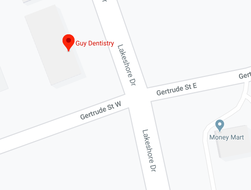What Happens on My First Visit in Detail?
Let’s break down the various components of a comprehensive dental examination:
Feel free to ask if you have any further questions or need additional information
- Dental Health Interview:
- We listen attentively to your concerns, past dental experiences, and expectations.
- Your input helps us understand any recurring problems and tailor our approach accordingly.
- We also inquire about your perception of your smile, as aesthetics matter too.
- Comprehensive Medical History:
- Understanding your overall health is crucial for dental care.
- We gather information about medical conditions, medications, allergies, and relevant health history.
- Digital Camera Pictures:
- High-resolution images allow us to document your oral condition.
- We capture details of teeth, soft tissues, and any visible abnormalities.
- Dental Charting:
- We create a detailed chart of your teeth, noting existing restorations, missing teeth, and other relevant information.
- This serves as a reference for future treatments.
- Soft Tissue Exam (Oral Cancer Screening):
- We carefully examine various areas in your mouth, including cheeks, palate, throat, tongue, floor of the mouth, and lips.
- Our goal is to identify any abnormalities, such as ulcers, oral cancer, cysts, benign tumors, or signs of cancer from other parts of the body.
- Regular screenings are essential for early detection and better treatment outcomes.
- Periodontal Exam:
- We evaluate gum tissues for color, contours, and texture.
- Healthy gums appear pink, have a stippled surface, and do not bleed.
- Signs of gingivitis (redness, swelling, bleeding) are noted.
- A periodontal probe measures gingival pockets and recessions around each tooth.
- We assess plaque buildup, furcation defects, and tooth mobility.
- Examination of Teeth and Existing Restorations:
- We inspect teeth for stains, chips, cracks, cavities, malformations, excessive wear, and mobility.
- Existing dental restorations (fillings, crowns, etc.) are also evaluated.
- Digital Radiographs (X-rays):
- These play a crucial role in assessing oral health.
- Bitewings detect cavities between teeth and assess bone loss.
- Periapicals focus on individual teeth, identifying issues like abscesses and root fractures.
- Panoramic images assess overall mouth health, including impacted teeth and jaw alignment.
- Evaluation of Your Bite:
- We assess how your upper and lower teeth function in relation to each other.
- Improper alignment, heavy contacts, excessive wear, and headaches are considered.
- Jaw-Joint and Muscle Assessment:
- We palpate jaw muscles for tenderness, perform joint loading tests, evaluate jaw movement range, and listen for joint sounds.
- This helps identify potential jaw-related issues.
- Treatment Plan Consultation:
- We provide a printed summary of necessary treatments and estimated costs.
- Treatment options, consequences of not receiving treatment, and preventive measures are explained.
- We discuss financial aspects and estimated dental benefit coverage.
- Your active participation throughout the process is encouraged.
Feel free to ask if you have any further questions or need additional information


